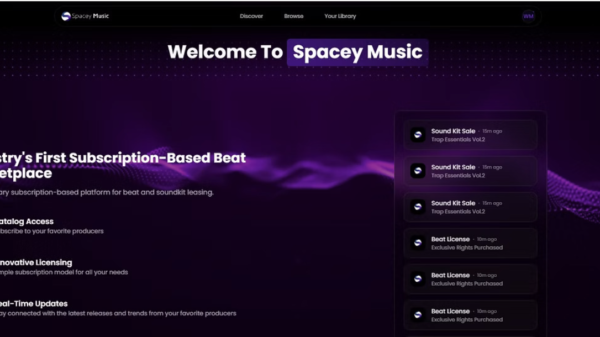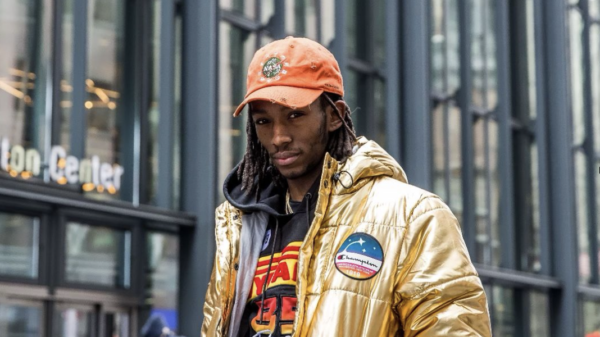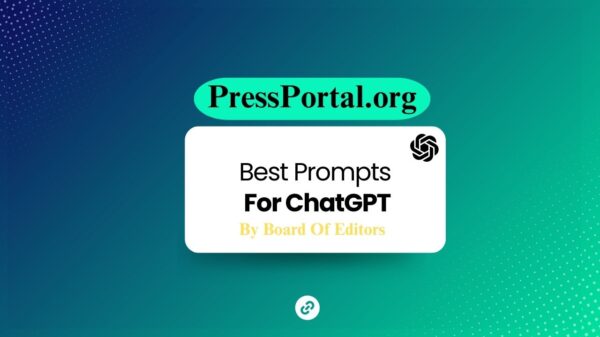Sixty years ago today, on August 15, 1965, the Beatles played Shea Stadium in New York, and the world has never recovered. It was the biggest pop explosion the world had ever seen, with 56,000 kids screaming for John, Paul, George, and Ringo. It’s the most famous show they ever played — the most famous pop concert ever — even though nobody could hear a note of it. Other gigs have drawn far bigger crowds, made far more money. But Shea is still the ultimate image of fan hysteria — a massive swarm of Beatlemaniacs gathered together for a night of communal rapture, bonded in music, shrieking their lungs and brains out. The toppermost of the poppermost. The “yeah yeah yeah” of the gods. The biggest twist, with the loudest shout.
“It was the first time that anyone had played any of those stadiums,” Paul McCartney recalled in 2003. “It became kind of normal for people like the Floyd. We were playing through the baseball speakers and you couldn’t hear a thing with the crowds screaming—those 56,000 ‘seagulls’.”
But that doesn’t mean Paul didn’t love every second of it. “I think we just went a bit hysterical that night,” he said. “We couldn’t believe where we were and what was going on, we couldn’t hear a bloody thing and we thought ‘This isn’t very good, but it’s going down great.’ The hysteria started to kick in. That was a great one.”
But Shea was more than just the first high-profile stadium concert. It showed everyone how huge, untamable, crazed pop music could be. It destroyed the hopes of everyone who still thought the Beatles — and their young female audience — were just a passing fad, which was still the conventional adult wisdom in 1965. The Fabs couldn’t be dismissed anymore, and neither could the girls. It shattered all the cliches about how show-biz was supposed to work. Never before had that many humans joined together in one place to celebrate music — and on a deeper level, to celebrate each other. That’s why “Shea Stadium” is still the two-word code for the culmination of pop dreams at their loudest, lustiest, scariest, and most deranged.
Editor’s picks
The Shea footage is still a shock to witness, no matter how many stadium shows you’ve seen in person or onscreen. The lads run up the dugout steps — their dressing room was the umpires’ locker — to a sonic blast on the level of Krakatoa, a scream unlike any noise anyone there has heard. A cop clutches his hands to his ears in agony. The boys are dazed, walking, stumbling, weaving, looking around in shock. Big surprise: Paul is walking faster than the others, he can’t wait to get there, He starts running, skipping, come on lads, John starts running too, let’s go, it’s all happening too fast but not fast enough for them. The cops hilariously back away from the band, in terror, never having seen or heard a scene like this before, because nobody ever has. John’s the first one up the stairs to the stage. The very first thing they say, before greeting the crowd, is to greet each other: “Hello, Paul!” “Hello, John!”
Everything looks so rickety — this stadium wasn’t built for pandemonium like this. The boys seem so tiny, the crowd so giant and ferocious. Everybody here tonight — except the cops—has dreamed of this moment for months, yet nobody even came close to picturing how it would actually sound or feel. Nobody was dreaming big enough.
“If you look at the footage, you can see how we reacted to the place,” Ringo recalled in the Anthology documentary. “It was very big and very strange.” Check out poor Ringo as he walks to the stage; he glances up, and you can see his knees buckle with vertigo. George is grinning so wide you’re afraid his jaw might snap off. Two of the screaming fans out there in the crowd would end up as Beatle wives — Linda Eastman McCartney and Barbara Bach. Olivia Arias Harrison did her screaming a few days later, at the Hollywood Bowl. Mick Jagger and Keith Richards were in the house at Shea — probably the two most jealous people there.
Related Content
It’s the scream that makes the Shea legend, more than anything else — the girls are amplifiers for each other, making their collective yeeeaaaaah louder than a hundred thousand lungs have any right to be. At countless solo shows, Paul has asked the ladies in the house, “Give me a great big Beatles scream!” It’s one thing to say that in a stadium — yet I saw him say it earlier this year at NYC’s Bowery Ballroom, even though it’s a bar that holds only a few hundred people. It doesn’t matter. Wherever strangers gather to scream for music, we are all Shea Stadium.
This kind of joyful noise didn’t usually happen at Shea, home of the New York Mets, then the most famous terrible team in baseball history. They went 50-112 that season. But the Beatles, never sports fans even in their boyhoods, didn’t know or care a thing about America’s pastime. The first time they played a baseball park, in Kansas City in 1964, they mocked the whole sport at a press conference where Paul snickered, “Great game!” Ringo summed it up: “You throw the ball, and then another ten minutes you have a cigarette and throw another ball.”
The Met are celebrating the anniversary tonight by giving out replicas of Shea Stadium to fans at Citi Field, where they’re playing the Mariners. They’ll also have a Beatles tribute band playing before the game. Shea was demolished in 2009, but fittingly, Paul McCartney played the last music ever heard there. He crashed a Billy Joel song for the final two songs, “I Saw Her Standing There” and “Let It Be.” In a very Macca touch, he played the same Hofner bass he played there in 1965.
Ed Sullivan introduced them at Shea, looking pitifully out of place, like they dug him up for the occasion. Paul was the only one to acknowledge him or shake his hand. They went on at 9:16 pm, after a surprisingly down-market string of opening acts: Motown soul singer Brenda Holloway, sax legend King Curtis, Cannibal & the Headhunters, Sounds Incorporated, the pre-fame Young Rascals (still six months away from their first hit, “Good Lovin’”). It was the first live show of their brief but eventful U.S. jaunt—over the next couple of weeks, they met their idol Elvis Presley in Beverly Hills, and dropped acid at a pool party with the Byrds and Peter Fonda. (John turned the experience into “She Said She Said.”)
They played an eccentric half-hour set, skipping their biggest crowd-pleasers — no “She Loves You,” no “I Want To Hold Your Hand,” no “I Saw Her Standing There.” Bizarrely, yet gloriously, they played “Baby’s in Black,” a song John and Paul always loved to sing together, sharing a microphone and dueling eyeball to eyeball. They insisted on keeping it in their live show right up to their final gig, even though it was never a hit, not even a single, just a ditty that nobody loved the way these two boys did, for reasons they never divulged. The full set list: “Twist and Shout,” “She’s a Woman,” “I Feel Fine,” “Dizzy Miss Lizzy,” “Ticket to Ride,” the George showcase “Everybody’s Trying to Be My Baby,” “Can’t Buy Me Love,” “Baby’s In Black,” Ringo’s vocal “Act Naturally,” “A Hard Day’s Night,” “Help!”, and the B-side screamer “I’m Down.”
They played Shea Stadium again a year later, in August 1966, but by then, the fun had fizzled out of touring for them. The Fabs were in their final days as a live band, playing their last-ever show less than a week later. Incredibly, the 1966 Shea gig wasn’t even sold out — didn’t come close. But when we talk about Shea Stadium, we’re talking about that day in August 1965, and the way it lives on as a permanent part of pop culture. It still represents the standard every pop star aspires to reach. “Now it’s quite commonplace for people to play Shea Stadium or Giants Stadium and all those big places, but this was the first time,” Paul said in the 1995 Anthology. “It seemed like millions of people, but we were ready for it. They obviously felt we were popular enough to fill it. Once you go onstage and you know you’ve filled a place that size, it’s magic. Just walls of people.”
One night, at one of these giant U.S. shows, their manager Brian Epstein lived out a secret fantasy he’d always had. He sneaked out into the crowd, stood unnoticed in the back with everybody else, and shrieked his head off, the way he’d always wanted to. You look at Shea Stadium, or listen to the havoc going on, and you get swept up in that orgiastic frenzy. “Half the fun was being involved in this gigantic event ourselves,” McCartney said. “I don’t think we were heard much by the audience. The normal baseball-stadium PA was intended for: ‘Ladies and gentlemen, the next player is…’ But that was handy in that if we were a bit out of tune or didn’t play the right note, nobody noticed. It was just the spirit of the moment. We just did our thing, cheap and cheerful, ran to a waiting limo and sped off.”
Trending Stories
Full disclosure: I once had a shrink who went to Shea. She casually mentioned it once during a session, and I couldn’t let her change the subject back to my issues, now could I? I grilled her on every last detail. She was a Paul girl, obviously. Those four specks of brown, on the field of grass. She couldn’t hear a note, couldn’t name a single song they played. Couldn’t see their faces. But she knew one of those four specks was Paul. Maybe it was dumb to waste an entire session on those stories—yet I suspect it was one of the most productive therapy sessions I’d ever had.
But that’s why Shea Stadium remains the most iconic concert ever — it’s the ultimate symbol of pop thrills at their most gigantic, their most absurdly excessive. It’s far beyond any success the Beatles used to fantasize about back in Liverpool. It ’s far beyond the fan’s dreams of how wild and ecstatic a musical gathering could be. The Fabs look at this crowd the way F. Scott Fitzgerald described Dutch sailors looking at America at the end of The Great Gatsby — face to face for the last time in history with something commensurate to their capacity for wonder. And the crowd stares at the Beatles the same way. Sixty years later, that crazy night at Shea Stadium still defines pop music at its most outrageously alive.






























